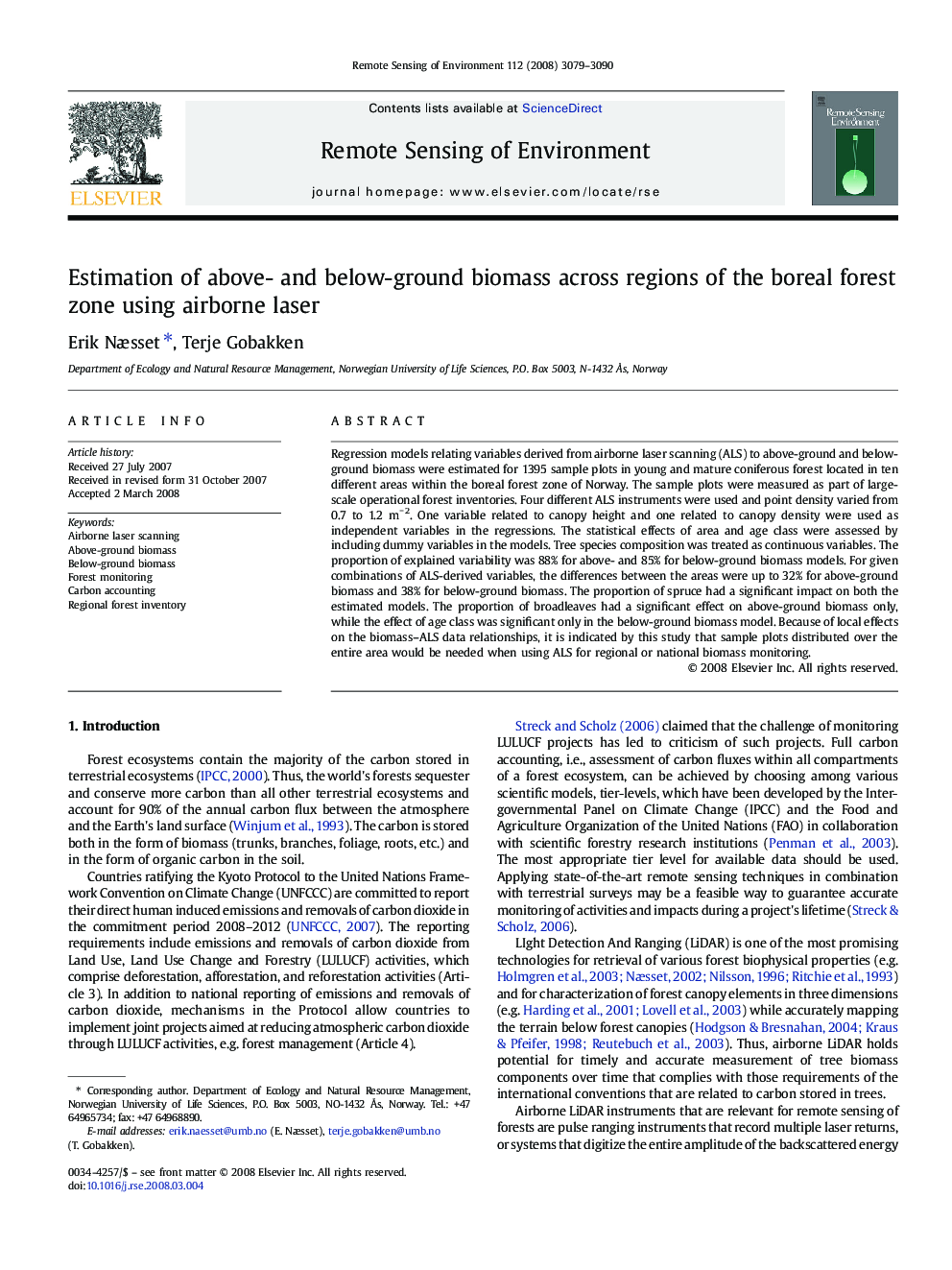| Article ID | Journal | Published Year | Pages | File Type |
|---|---|---|---|---|
| 4460267 | Remote Sensing of Environment | 2008 | 12 Pages |
Regression models relating variables derived from airborne laser scanning (ALS) to above-ground and below-ground biomass were estimated for 1395 sample plots in young and mature coniferous forest located in ten different areas within the boreal forest zone of Norway. The sample plots were measured as part of large-scale operational forest inventories. Four different ALS instruments were used and point density varied from 0.7 to 1.2 m− 2. One variable related to canopy height and one related to canopy density were used as independent variables in the regressions. The statistical effects of area and age class were assessed by including dummy variables in the models. Tree species composition was treated as continuous variables. The proportion of explained variability was 88% for above- and 85% for below-ground biomass models. For given combinations of ALS-derived variables, the differences between the areas were up to 32% for above-ground biomass and 38% for below-ground biomass. The proportion of spruce had a significant impact on both the estimated models. The proportion of broadleaves had a significant effect on above-ground biomass only, while the effect of age class was significant only in the below-ground biomass model. Because of local effects on the biomass–ALS data relationships, it is indicated by this study that sample plots distributed over the entire area would be needed when using ALS for regional or national biomass monitoring.
